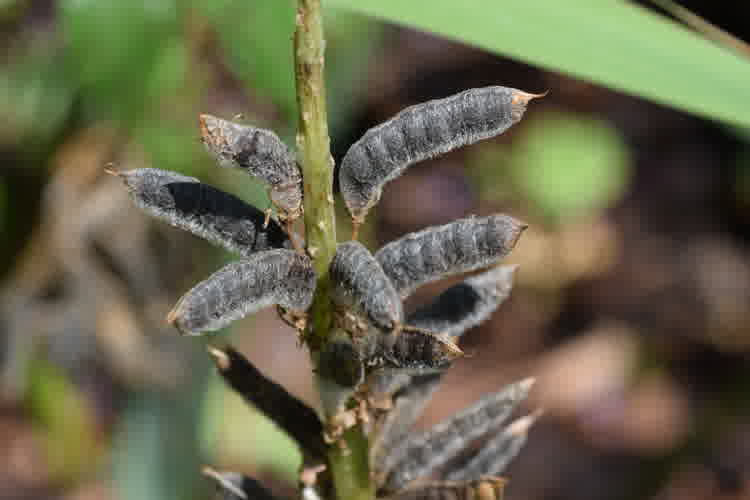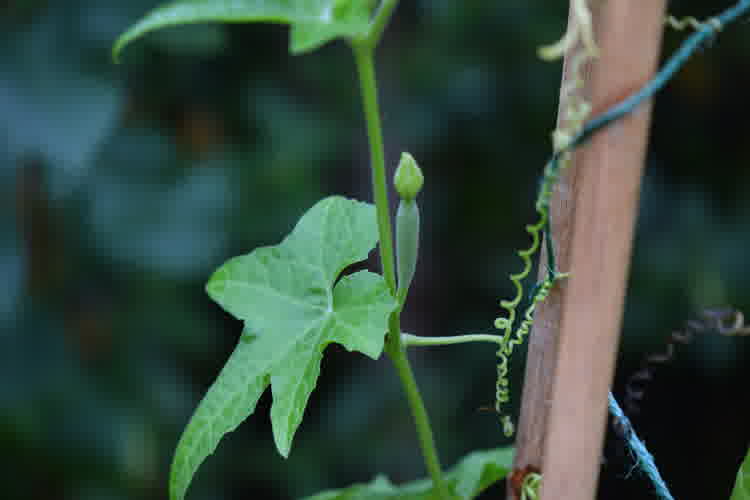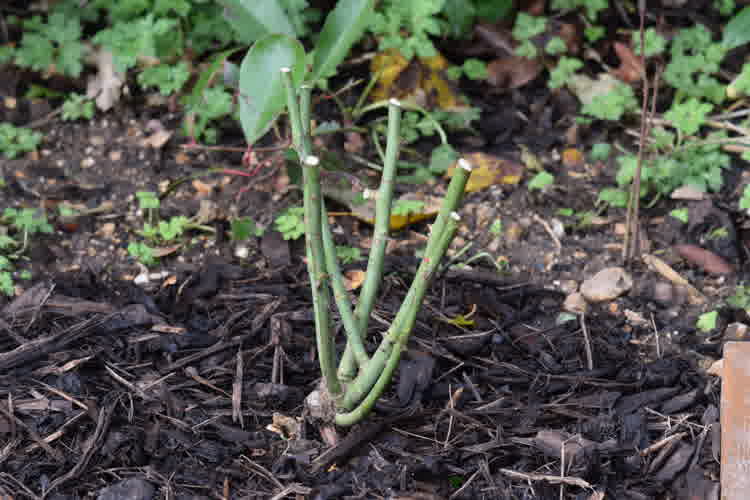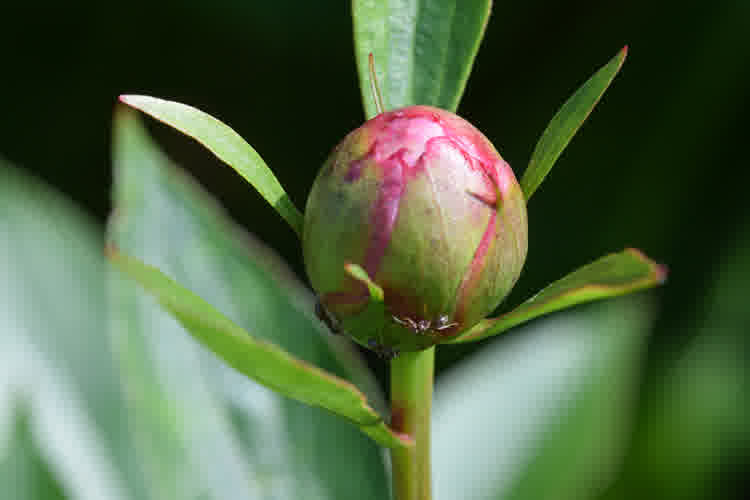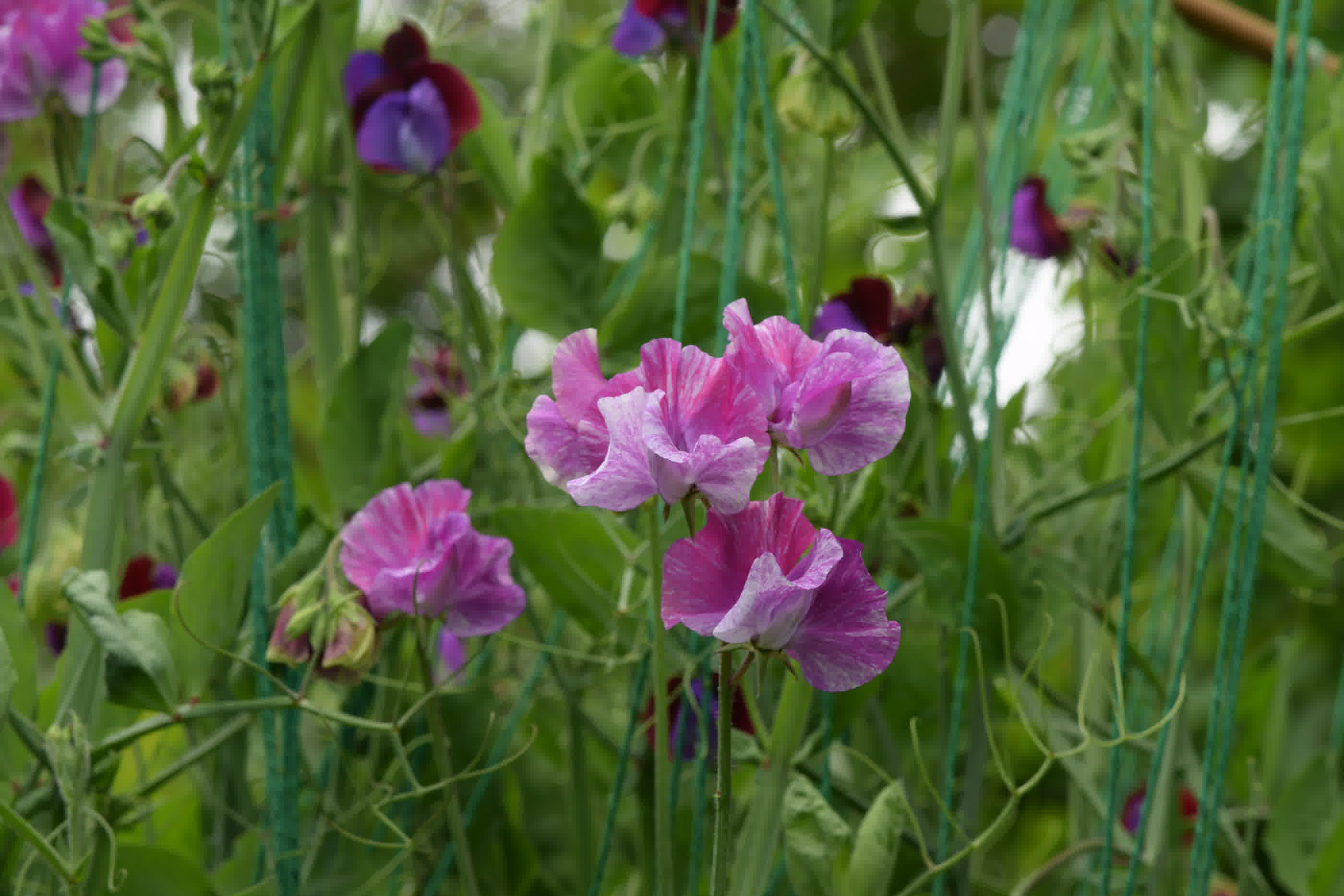
Sweet Peas
Sweet peas are an essential addition to any garden. They are both easy to grow and care for and have the most delightful fragrance that few other flowers can rival. In this guide, I'll cover everything you need to know about growing sweet peas from seed, caring for them, and selecting the best varieties for the most captivating scent.
Table of Contents
Varieties
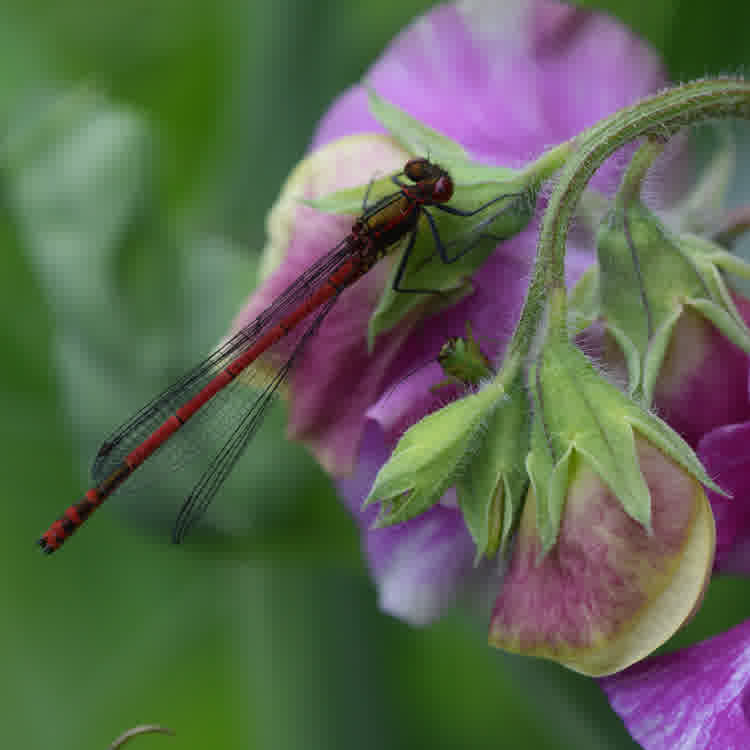
The sweet pea is an annual climbing plant that produces tendrils that it uses to secure itself to structures, such as trellises. Sweet pea plants can reach heights of over 2m with the right growing conditions. The scientific name of the sweet pea is Lathyrus odoratus.
Below are the three main types of sweet peas that gardeners grow:
Old fashioned varieties

Old fashioned varieties produce smaller flowers with non-frilled petals. They can develop multiple flower buds per stem, but usually fewer than other types. The flowers emit a strong fragrance. The image above is of an old fashioned variety called 'Matucana'.
Spencer varieties
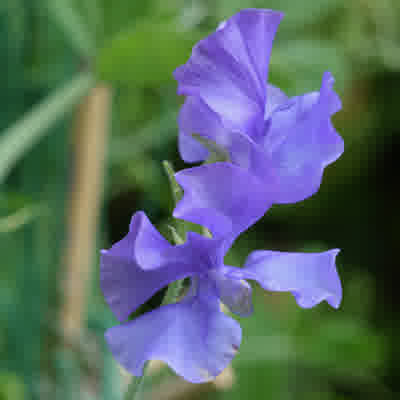
Spencer varieties produce larger, fancier blooms with frilly petals. They tend to develop more flower buds per stem than old fashioned types. The flowers emit a delightful fragrance. However, it may be less strong than some old fashioned types. The image above is of a Spencer variety called 'Big Blue' - note the frilly petals.
Modern varieties
Modern varieties are more like the old fashioned types, but with larger flowers and longer stems. As with the other types, they emit a delightful fragrance. They typically produce longer stems than the old fashioned varieties, making them an excellent choice for cut flowers.
Within these three varieties, there are multiple cultivars to choose from.
You can expect to see sweet peas in shades of pink, purple, blue, white and other colours. Some flowers are solid coloured. While others are bi-coloured and can have patterns such as streaks.
If you've wondered which sweetpea variety is the best for scent, the title usually goes to Matucana.
Matucana is often referred to as having the most powerful scent of all the sweet peas. It is delightful! Other varieties that produce a powerful perfume include 'Big Blue', 'Painted Lady', and 'King Edward VII'. However, most sweet peas will emit a delightful scent, particularly the Old Fashioned types.
Planting
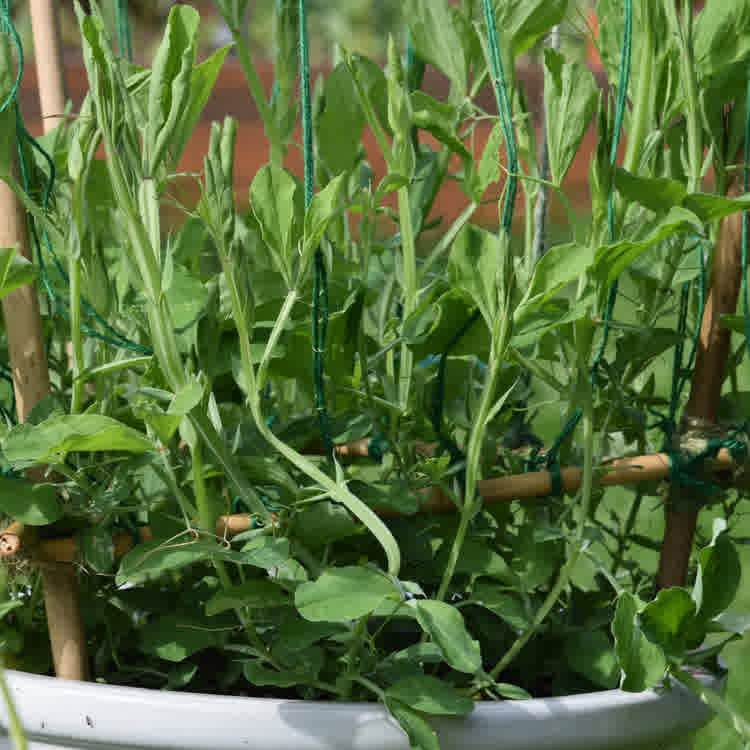
Sweet peas are an extremely rewarding plant to grow from seed. They tend to have a high germination success rate, making them an easy plant to grow for both experienced and novice gardeners.
As sweet peas are tall climbing plants you get a real sense of satisfaction sowing these small seeds and watching them grow into 6ft+ towering plants. And if that wasn't enough, once they begin to produce those divinely scented blooms en-mass you'll know it's all been worth it!
So let's get to it. Below are step-by-step instructions for how to grow sweet peas from seed.
Do I need to soak sweet pea seeds?
A common question when sowing sweet peas is do you need to pre-soak the seeds before sowing.
Sweet peas will happily germinate without being pre-soaked, so it is not essential to soak them before sowing.
So why do some people pre-soak their sweet pea seeds? The reason is that it can speed up germination. However, it can potentially increase the risk of rot developing, albeit a small increase.
In my opinion, sweet peas germinate relatively quickly. As such, I find it an unnecessary step.
Create a potting mixture
Sweet peas prefer rich, free-draining soil. Fill a container with pre-made potting soil or make your own.
I make my own by adding small amounts of gravel and perlite to good-quality compost.
You can use cardboard or plastic pots for this. When using cardboard pots, the soil tends to dry out faster as water can evaporate through the sides of the pot. However, the advantage is plant roots can grow through cardboard, and the plant can be transferred directly to the ground in the pot later on.
Sow the seeds
How many sweet pea seeds per container should I sow? I tend to sow 3 seeds per pot.
owing 2 or 3 seeds per container allows for increased yield in case some seeds fail to germinate. There's no need to thin these out if all three germinate. They will grow together in a group of 2 or 3 without issue.
How deep should sweet pea seeds be sown? Using your finger or dibber create a hole around 2 inches deep then place a single seed into the hole and cover over with the potting mix.
Water and keep the soil moist
Once you've sown all your seeds, give them a good amount of water. Place your sweet peas into a cold frame or greenhouse and water as needed to keep the soil moist.
How long do sweet peas take to germinate? Sweet pea seeds take on average 10 - 16 days to germinate
Ongoing care
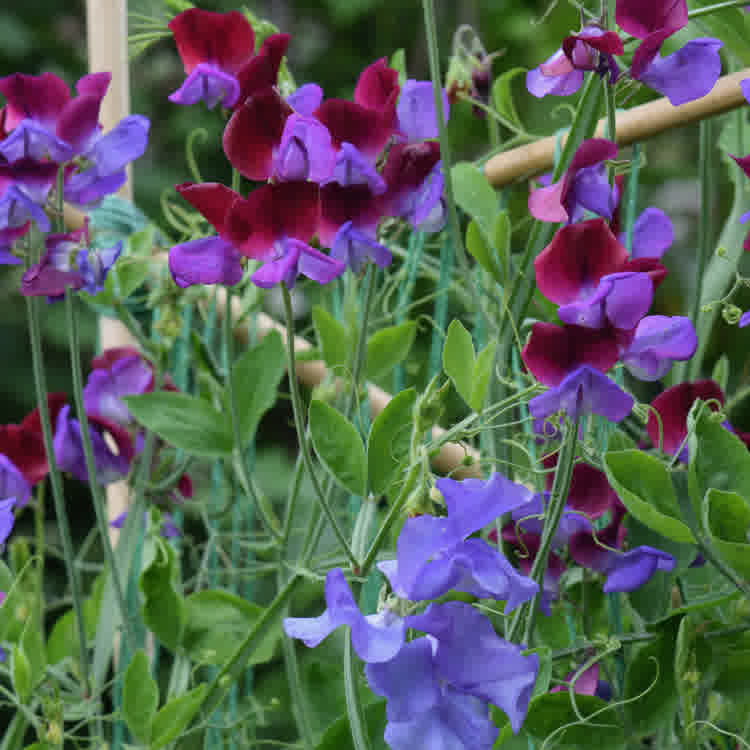
Sweet peas are not the most labour-intensive plants to care for and cutting sweet pea flowers for bouquets and vases is often the treat most individuals grow these plants for.
Do you need to pinch sweet peas? This is a common question when growing sweet peas. Pinching plants is the process of removing the growing tip of the plant which forces the plant to focus energy on side shoots thus becoming bushier. However, annual sweet peas tend to be bushy plants and do not require pinching. Pinching may produce more blooms but they will typically be smaller than unpinched plants.
You will need to provide your sweet peas with a support structure for them to grow up. This could be a trellis, bamboo canes or string. The plant produces tendrils and will hook itself into the structure as it grows.
Do I need to fertilise sweet peas? Sweet peas will benefit from additional nutrients. There are two options when it comes to fertilising. You can mix in a generous measurement of all-purpose fertiliser, such as Fish, Blood & bone. Mix this in at the time of planting out. This is what I do and the sweet pea plants seem to love it, flowering all season long!
Option 2, is regularly feeding your sweet pea plants with a liquid fertiliser such as tomato feed.
Sweet peas will do best when the soil stays moist. Check frequently and water as required to maintain this.
Now it's on to the fun bit. Cutting sweet pea flowers! Cutting your own sweet peas is very rewarding. Simply cut the flower stem at the base where it connects to the stem. If you're not collecting sweet pea flowers for vases and bouquets, ensure to deadhead any spent blooms, which will encourage the plant to produce more flower buds.
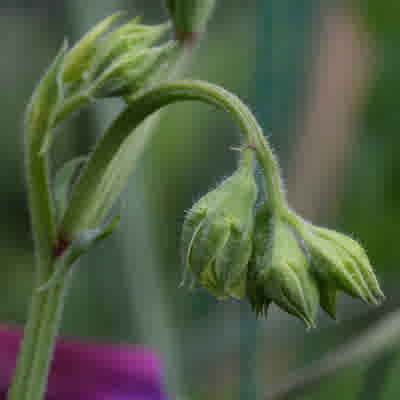
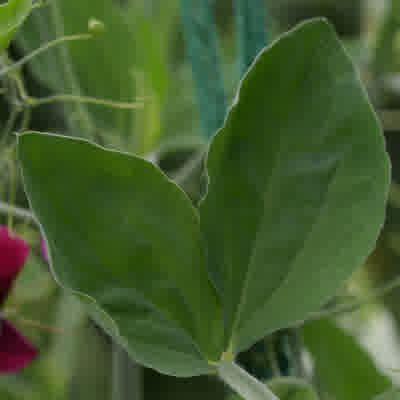

Pest and diseases
Pests
Sweet peas are relatively resilient plants. However, slugs and snails can quickly destroy young plants. Protect your sweet pea seedlings from these pests. Copper tape often provides good results for deterring them. Once the plants become larger they can quite easily tolerate some slug and snail damage to their leaves.
Why are my sweet pea buds dropping off? Whilst this is neither a disease nor a pest, I have decided to add this topic to this section as many growers may see this as a problem. Typically this is not a major concern and is usually due to environmental factors such as large temperature fluctuations usually found in early spring. Although this can be distressing, it is not a cause for concern and does not mean your plant is unable to produce blooms. Once the temperature becomes more stable you should see this happening less.
